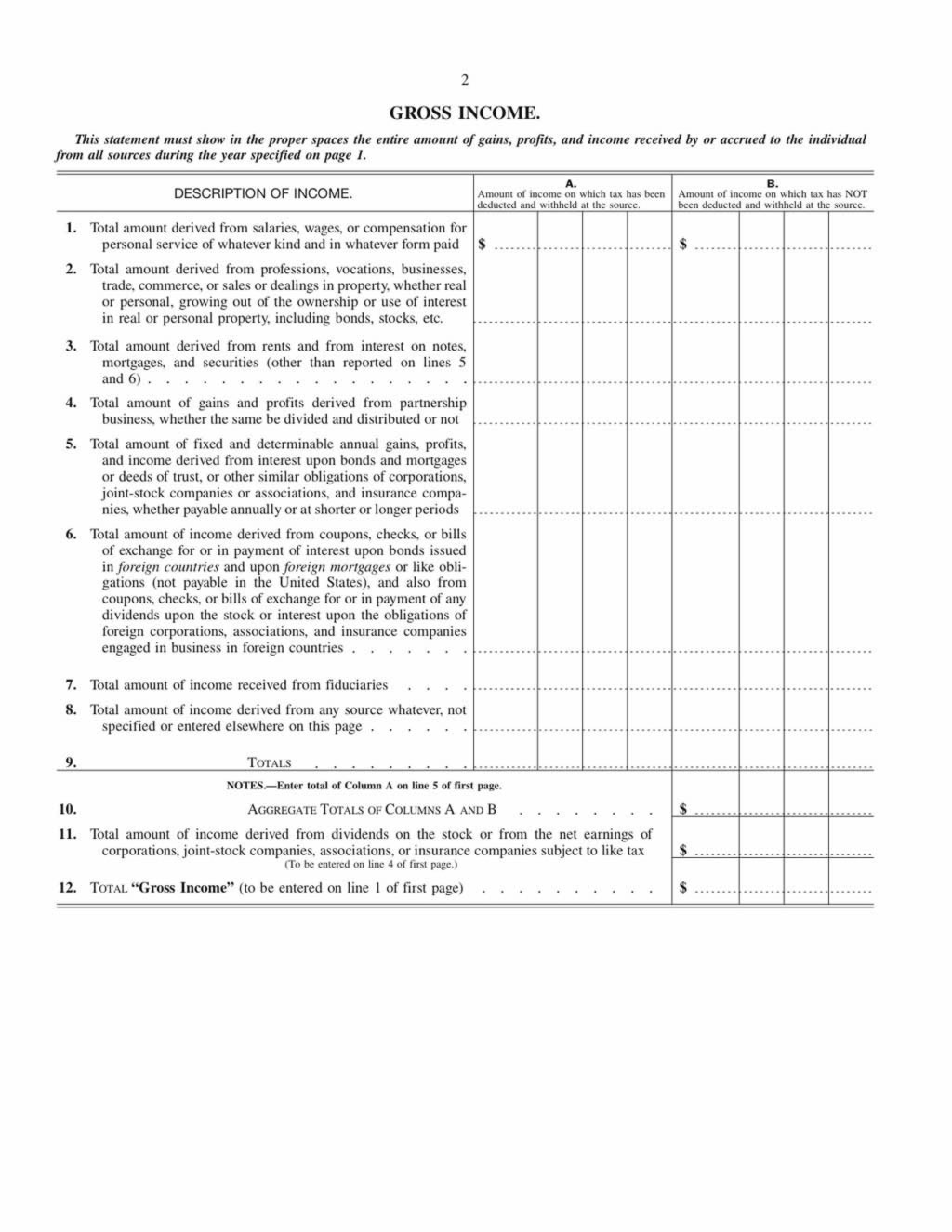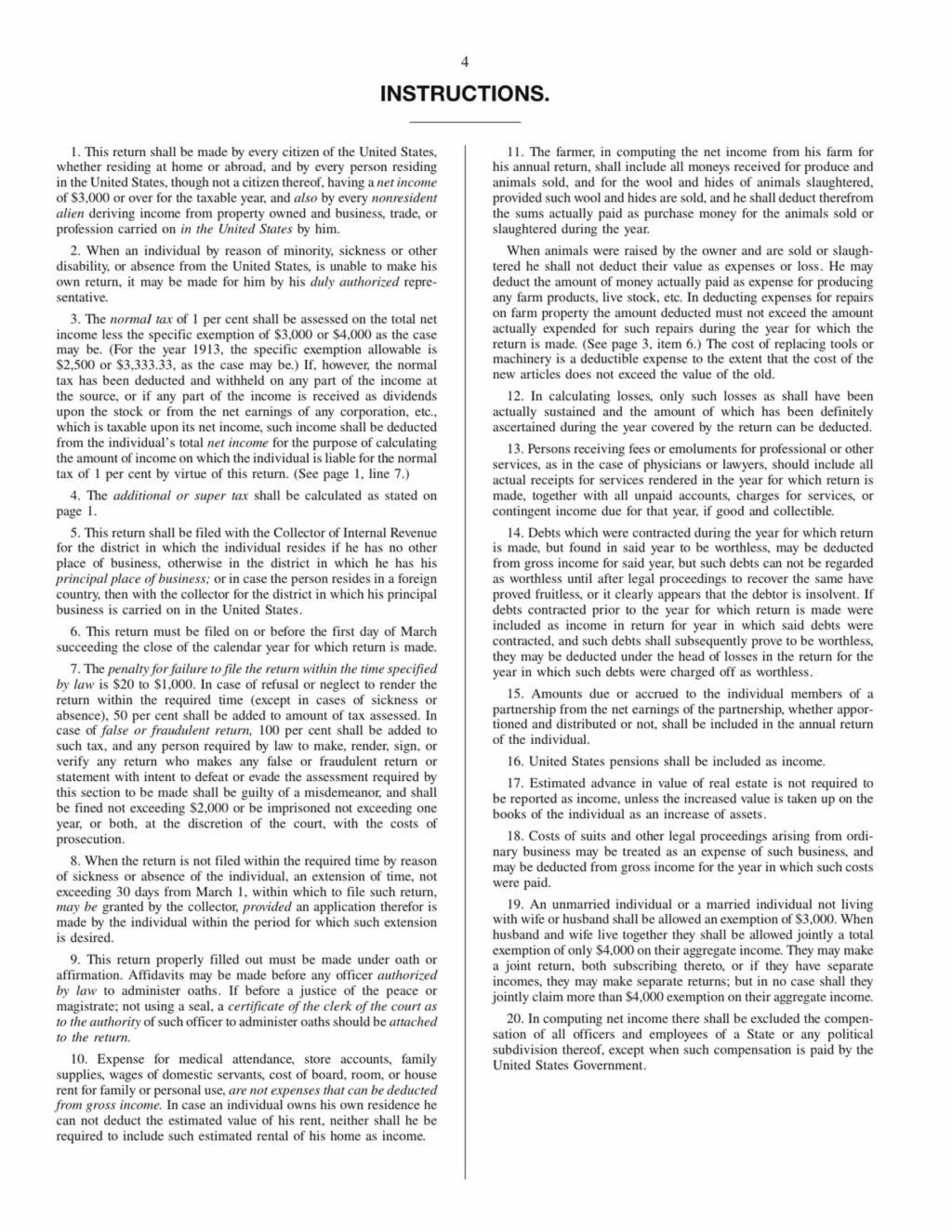Once again, the 1913 1040 form as a PDF.
The four pages of the 1913 income tax form as image files. Click on a page to see it full-sized.




|
In 1913 the 16th Amendment to the U.S. Constitution was ratified. It was a fairly short amendment, as such things go, weighing in at a whopping 30 words. It reads as follows:
It was a simple little thing, with rather large consequences for the republic. Prior to the income tax being instituted, the United States government managed to fund itself with various excise taxes, and duties on imports. Afterwards, such taxes pale into insignificance to the revenue generated by the income tax. Those of us who actually pay taxes are familiar with the 1040 form. It was way back in 1913 that the IRS (Infernal Revenue Service) unvelied this form. The modern form (PDF) is a two page document that requires an instruction manual that is 104 pages long. This does not include all the ancillary schedule forms and their associated instructions. The 1913 form (PDF) was actually longer, being three pages in length, however the instructions were printed on a single page of paper. Back in 1913, there were 6 tax brackets.Those making under $20,000 per year paid no tax. According to this inflation calculator, $20,000 in 1913 was equivalent to $580,816.16 in 2022. This first $20k was subtracted from your income so even if you made $30,000, you were only taxed on the last $10,000 of it. The rate was a whopping 1%. So, let's take that hypothetical person who made $30,000 in 1913. He would have paid $100 in taxes on it. If you run that through the above inflation calculator, you'll see that it would be equivalent to $2,515.06 today. Well, that sounds like a lot of money until you consider that what that really means is that in today's dollars, someone would have to make $754,518.18 per year to pay that $2,515.06 in income tax. How do you like them apples folks? |
Once again, the 1913 1040 form as a PDF.
The four pages of the 1913 income tax form as image files. Click on a page to see it full-sized.



